Every year, on the long weekend of Artefiera and Artcity, cultural life in Bologna lights up with many exhibitions across the city in museums, galleries, historic buildings, and other places usually inaccessible to the public. The exhibition currently on show at the Museum of Modern Art (MAMbo) is dedicated to Ludovica Carbotta (1982, Turin), a multimedia artist whose research ranges from sculpture to photography, from drawing to video art. Carbotta lives and works in Barcelona. After graduating in Painting at the Albertina Academy of Fine Arts in Turin in 2005, she continued her studies with an advanced course in Visual Arts taught by Yona Friedman in 2008 at the Antonio Ratti Foundation in Como. In the first half of the following decade, she moved to London, where she attended Central Saint Martins and obtained a Master of Fine Arts from Goldsmiths University in 2015. Curated by MAMbo’s director Lorenzo Balbi with the assistance of Sabrina Samorì, the exhibition is the first retrospective dedicated to Ludovica Carbotta and offers an overview of her work in its various forms of expression. The title, Very Well, on My Own, condenses the poetics of the artist by introducing the theme of the relationship between the public sphere and the private one. Urban spaces, landscapes and architecture are her main investigation areas, whose measurement units are represented by the body itself.
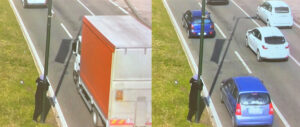
Ludovica Carbotta, “Il viaggio è andato a meraviglia (esercizio uno)”, 2010, video, color and sound, courtesy the artist
The visit begins with “The journey went wonderfully (exercise one)” from 2010, a 120-minute long uncut video where the artist, motionless, embraces a lamppost on the roadside as cars pass by. Carbotta, by neutralizing her movement, becomes part of the urban landscape, while time is marked by the relentless flow of traffic. The fixed camera contrasts two geometrical planes: the cars slide on a horizontal plane, while the artist stays close to the lamppost along a vertical line that seems to deny the everyday need to move from place A to place B. The projection is supplemented by a series of 120 small pencil drawings, juxtaposed on the wall to form a large rectangle. The sketches depict urban views from the perspective of a bus, train, or car passenger: the point of view shot is reversed compared to that of the film, and the artist actively collects the images of the landscape, processed through her memory and controlled by the time available.
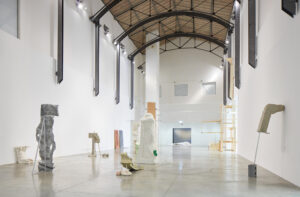
Ludovica Carbotta, “Very Well, on My Own”, installation view at MAMbo – Museo d’Arte Moderna di Bologna | Sala delle Ciminiere, photo Carlo Favero, courtesy MAMbo – Museo d’Arte Moderna di Bologna
After the screening, the exhibition continues in the main hall with “Die Telamonen” (2020-2024). This installation consists of a series of anthropomorphic sculptures conceived as a sort of family whose members, although from the same genealogy, undergo a process of differentiation through which one generates the other: the human figure recurs, while materials and surfaces vary. Instead, human figures disappear in “Images of Others Has Become Part of the Self” (2024), a site-specific installation that looks like a wooden scaffold conceived by the artist to support her weight by raising her body as high as possible. The architecture does not follow a plan prior to the work: the structure develops empirically, based on the artist’s body opposing gravity. The artist’s body is not present, but the work is the result of her corporeality, which can be imagined as a chronology of positions that have defined the surrounding environment. Space and time act as variables of a function whose graph is represented by the work itself. In other cases, the investigation shifts to the moment, to a specific point on the line.
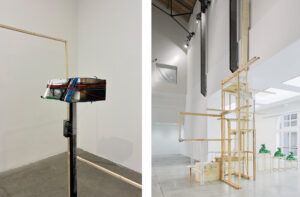
Ludovica Carbotta, left: “The Original is Unfaithful to the Translation”, 2015, series of sculptures, 2 audio (5 min. 30 sec.; 1 min. 39 sec.), video (7 min. 31 sec.), dimensions variables, courtesy The Place Collection, Rafa Macarron Collection; right: “Images of Others Have Become Parts of the Self”, 2024, wood, variable dimensions, courtesy the artist
In Ludovica Carbotta’s sculptures, there is always an idea of growth and evolution, as in the case of “Paphos” (2021-2024), located in the left wing of the Ciminiere hall, which reflect a stage of this process. It is an expansion that incorporates materials and objects until they become unrecognizable, while also revealing some of the elements that compose them. In a different way, the group of sculptures in the room on the right proposes a possible archaeology of the future: in “Falsetto” (2017-2018) the works incorporate architectural elements from different epochs of history that interact with boxes, buckets, and plastic structures, all objects of contemporaneity. Arches, columns, pipes, and stone blocks shape the ruins of civilization, transporting the visitor to the site of a modern Stonehenge: it can be seen as the prefiguration of a catastrophic future, but also the outcome of a present that resembles it. The group of works highlights the need to rethink structures from a ground zero of empirical knowledge.

Ludovica Carbotta, “Very Well, on My Own”, installation view at MAMbo – Museo d’Arte Moderna di Bologna | Sala delle Ciminiere, photo Carlo Favero, courtesy MAMbo – Museo d’Arte Moderna di Bologna
This latter aspect recurs in the artist’s production, as in the case of “Decompression Pathology” and “Do Not Measure the Surface”, actions that aim to create new routes within conventional geography, to bring position and location closer through experimentation, empirical measurement, focusing on “a fragment, an insignificant thing, trying as much as possible not to rely on previous knowledge”. In the first work, Carbotta measures Como Lake with the aim of finding its deepest point, while in the second one she tries to walk as long as possible without projecting her shadow, capturing everything through a subjective point of view shot. A statement work of Ludovica Carbotta’s research is the Monowe project, started in 2016, which gives its name to a hypothetical and utopian urban space inhabited by a single citizen. The first act, “Entrance to the City”, unfolds in the spaces of Parco del Cavaticcio (located near the museum), conceived as the work site for the construction of the city. Over time, the project expanded and took on different aspects until 2022 when it became a medium-length film, produced by BoFilm and awarded with the first prize by the Italian Council (11th edition) in 2022.
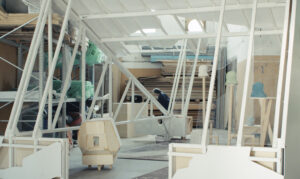
Ludovica Carbotta, “Monowe”, 2024, film, color, sound 45 min. The work was created thanks to the support of the Directorate General for Contemporary Creativity of the Ministry of Culture as part of the Italian Council (11th edition, 2022), the international promotion program for Italian contemporary art. Courtesy Castello di Rivoli Museo d’Arte Contemporanea, Rivoli
The film, whose protagonist is the inhabitant of Monowe, is set in the city’s courthouse, with the artist’s sculptures and architectures serving as scenery. It is a paradoxical trial, since the defendant, the judge, and the prosecutor are the same person represented in different phases of their life, from childhood to old age (the characters are respectively interpreted by Nilausen Carbotta, Willem Nilausen Trullàs, Elionora Nilausen Trullàs, Ondina Quadri, Michele Ragno, and Benedetta Barzini). The work hypothesizes a loss of collectivity in favour of the individual, reflecting on its possible consequences. The human being is the creator of space, but the city produces the human being: the plans increasingly end up blending and overlapping, and the bond between public and private spheres thickens. Time is the present, here and now, but it is also the past that steals every second, every minute, and every hour from the present. It is the time dictated by man that can be carried by the current or stopped at a point and turn its gaze forward or backward. Ludovica Carbotta’s work demonstrates that this cycle of production and consumption can be broken, and that the urban space can become the setting of the regeneration of this fracture.
Info:
Ludovica Carbotta. Very Well, on My Own
1/02/2024 – 5/05/2024
MAMbo – Museo d’arte Moderna di Bologna
Via Don Minzoni 14 | 40121 Bologna
Tel. +390516496611 | info@mambo-bologna.org
www.mambo-bologna.org
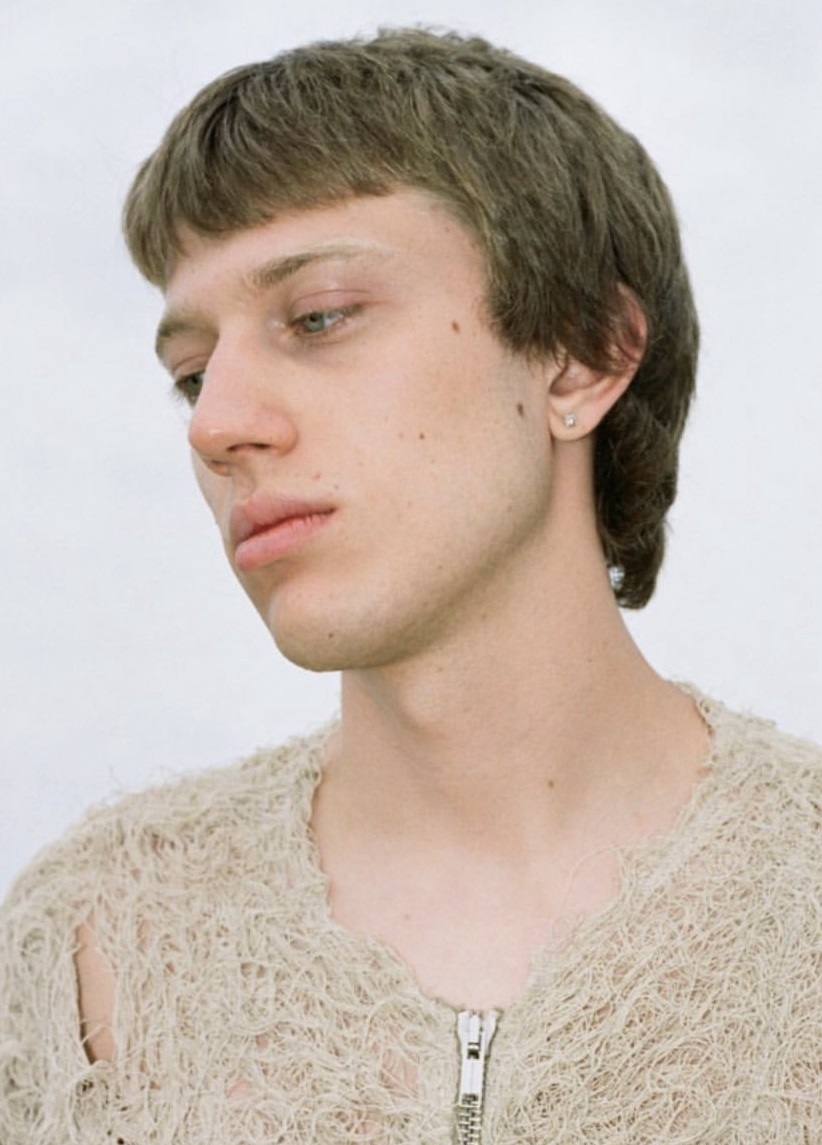
Born in Bologna, he studies fashion design and multimedia arts at the IUAV in Venice. He believes in the possibility of crossing boundaries between disciplines and that art can have an active role in breaking down inequalities and uniting people by creating communities.






NO COMMENT